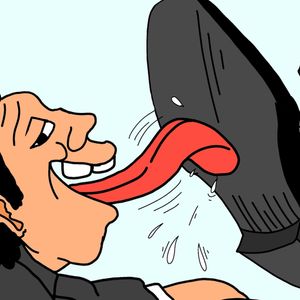Hold onto your hats, folks! The trade winds just got a whole lot choppier. In a move that’s sent ripples through markets and sparked immediate concern, former U.S. President Donald Trump has once again wielded the tariff hammer. This time, the target? Our neighbors to the north, Canada, specifically their steel and aluminum industries. Let’s dive into what’s happening and what it could mean for the economy and your investments. Trump Tariffs Return: Doubling Down on Duties In a surprising announcement that has echoes of past trade disputes, Donald Trump has decided to double the tariffs on Canadian steel and aluminum. We’re talking a jump from 25% to a hefty 50%! The justification? Apparently, it all boils down to electricity prices in Ontario. According to reports, Trump’s administration is pointing fingers at Ontario’s electricity price hikes as the reason behind this dramatic trade action. This move is slated to kick in on March 12th, so the clock is ticking, and the potential impacts are starting to become clear. Market Mayhem: Stock Selloff Triggered by Tariff News The immediate reaction from the markets was anything but positive. News of the increased tariffs acted as a trigger for a noticeable stock market selloff. Investors are clearly uneasy about the implications of escalating trade tensions, and this move by Trump has injected a fresh dose of uncertainty into the economic landscape. Why the jitters? Let’s break it down: Uncertainty is the Enemy: Markets hate uncertainty. Tariffs create uncertainty about future trade flows, business costs, and overall economic stability. Retaliation Fears: Trade actions are rarely one-sided. There’s a significant risk of Canada retaliating with its own tariffs on U.S. goods, leading to a tit-for-tat trade war. Economic Slowdown Concerns: Many economists believe tariffs ultimately harm economic growth, and this move fuels those concerns. It’s a classic case of trade policy impacting investor sentiment, and the initial market response underscores the seriousness of the situation. Canada Steel Tariffs: A Deeper Look at the Impact Let’s zoom in on the direct impact on Canada’s steel industry. A 50% tariff is a significant barrier to entry for Canadian steel producers looking to export to the U.S. market. Here’s what this could mean: Impact Area Potential Consequence Canadian Steel Exports Likely to decrease significantly due to increased costs and reduced competitiveness in the U.S. market. Canadian Steel Industry Profits Profit margins for Canadian steel companies could be squeezed, potentially leading to job losses or reduced investment. Domestic Canadian Steel Market Increased domestic supply of steel could lead to price adjustments within Canada, but overall industry health will be challenged. The Canadian government is likely to push back strongly against these tariffs, arguing that they are unfair and unjustified. The coming weeks will be crucial in seeing how Canada responds and whether negotiations can de-escalate the situation. Aluminum Tariffs Impact: Beyond Steel, Another Blow It’s not just steel that’s in the crosshairs. Aluminum from Canada is also facing the doubled tariff. The aluminum industry, like steel, is a vital part of the Canadian economy, and this tariff hike will have repercussions across various sectors. Consider these potential impacts of the Aluminum Tariffs Impact : Manufacturing Costs Rise: U.S. manufacturers who rely on Canadian aluminum will face higher input costs, potentially leading to increased prices for consumers. Supply Chain Disruptions: Tariffs can disrupt established supply chains, forcing companies to find alternative sources, which can be time-consuming and costly. Impact on Aluminum-Using Industries: Sectors like automotive, aerospace, and construction, which heavily rely on aluminum, could feel the pinch. The interconnected nature of the North American economy means that tariffs on aluminum will not just affect producers but will ripple through various downstream industries in both countries. US Canada Trade Relations: A Rocky Road Ahead? This tariff move throws a wrench into the already complex relationship between the U.S. and Canada. US Canada Trade has historically been one of the largest and most integrated in the world, but recent years have seen increasing friction. This tariff escalation raises serious questions about the future of trade relations between the two nations. Key considerations include: USMCA Under Strain: While the USMCA (United States-Mexico-Canada Agreement) is in place, these tariffs undermine the spirit of free and fair trade that the agreement is supposed to promote. Political Fallout: The move is likely to strain diplomatic relations between the U.S. and Canada, potentially impacting cooperation on other fronts. Long-Term Trade Uncertainty: Businesses operating in both countries will face increased uncertainty about the stability of the trade relationship, potentially impacting investment decisions. Navigating this rocky road in trade relations will require careful diplomacy and a willingness to find common ground. However, the initial signs are not encouraging. Inflation Risk Tariffs: Fueling the Fire? Perhaps one of the most concerning aspects of these tariffs is their potential to exacerbate inflation. Economists, including those at Goldman Sachs, are warning that these tariffs could indeed fuel inflation and further slow down economic growth. Let’s understand the Inflation Risk Tariffs pose: Increased Input Costs: As mentioned earlier, tariffs raise the cost of imported goods, which are often used as inputs in production. Pass-Through to Consumers: Businesses may pass on these increased costs to consumers in the form of higher prices for goods and services. Reduced Competition: Tariffs can reduce competition from foreign producers, allowing domestic firms to raise prices without fear of losing market share. With inflation already a major concern in many economies, adding tariffs to the mix could be like pouring gasoline on a fire. The potential for these tariffs to contribute to inflationary pressures is a significant risk that needs to be closely monitored. White House Optimism vs. Economic Reality Despite the widespread concerns from economists and market participants, the White House is maintaining an optimistic stance. They claim that this policy will be a boon for job creation and will boost domestic manufacturing. However, this perspective clashes with the warnings about inflation and economic slowdown. It raises the question: Is this optimism justified, or is it a case of wishful thinking? Many economists argue that: Short-Term Gains, Long-Term Pain: While some domestic industries might see short-term benefits from reduced foreign competition, the overall economic impact is likely to be negative in the long run. Job Creation Claims Questionable: The idea that tariffs lead to widespread job creation is often debated, with many studies suggesting that the job losses in downstream industries can outweigh any gains in protected sectors. Global Economic Impact: In an interconnected global economy, protectionist measures like tariffs can have unintended consequences and harm overall economic prosperity. The economic reality is complex, and the long-term effects of these tariffs remain to be seen. However, the initial reactions and expert opinions suggest a cautious and concerned outlook is warranted. Navigating the Tariff Terrain: What to Watch For So, what are the key takeaways and what should you be watching for in the coming weeks and months? Canadian Response: Keep a close eye on how Canada responds. Will they retaliate? Will they seek negotiations? Their actions will be crucial. Market Volatility: Expect continued market volatility as the tariff situation unfolds and economic data emerges. Inflation Data: Monitor inflation indicators closely to see if there is an upward pressure attributable to these tariffs. Policy Reactions: Pay attention to statements and actions from central banks and finance ministries as they assess the economic impact. The tariff landscape is dynamic and can change rapidly. Staying informed and understanding the potential impacts is essential for navigating these uncertain economic times. Conclusion: A Shock to the System Trump’s decision to double tariffs on Canadian steel and aluminum is undoubtedly a shock to the system. It has rattled markets, raised inflation fears, and strained trade relations. While the White House paints a rosy picture of job creation and domestic manufacturing gains, many economists warn of potential economic headwinds. The coming weeks will be critical in determining the full impact of these tariffs and how the global trade landscape will adjust. For now, businesses and investors need to brace themselves for potential volatility and uncertainty as the trade winds continue to shift. To learn more about the latest economic trends, explore our article on key developments shaping global market dynamics.















